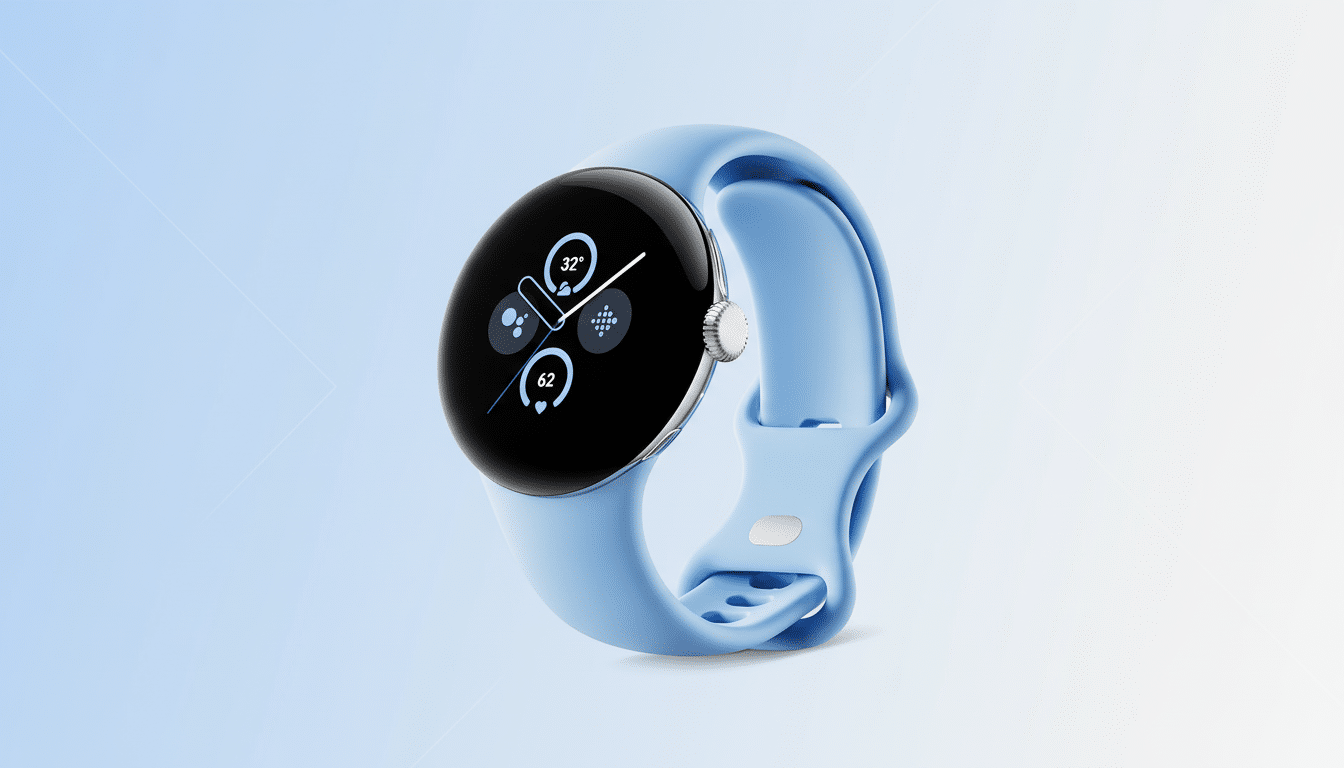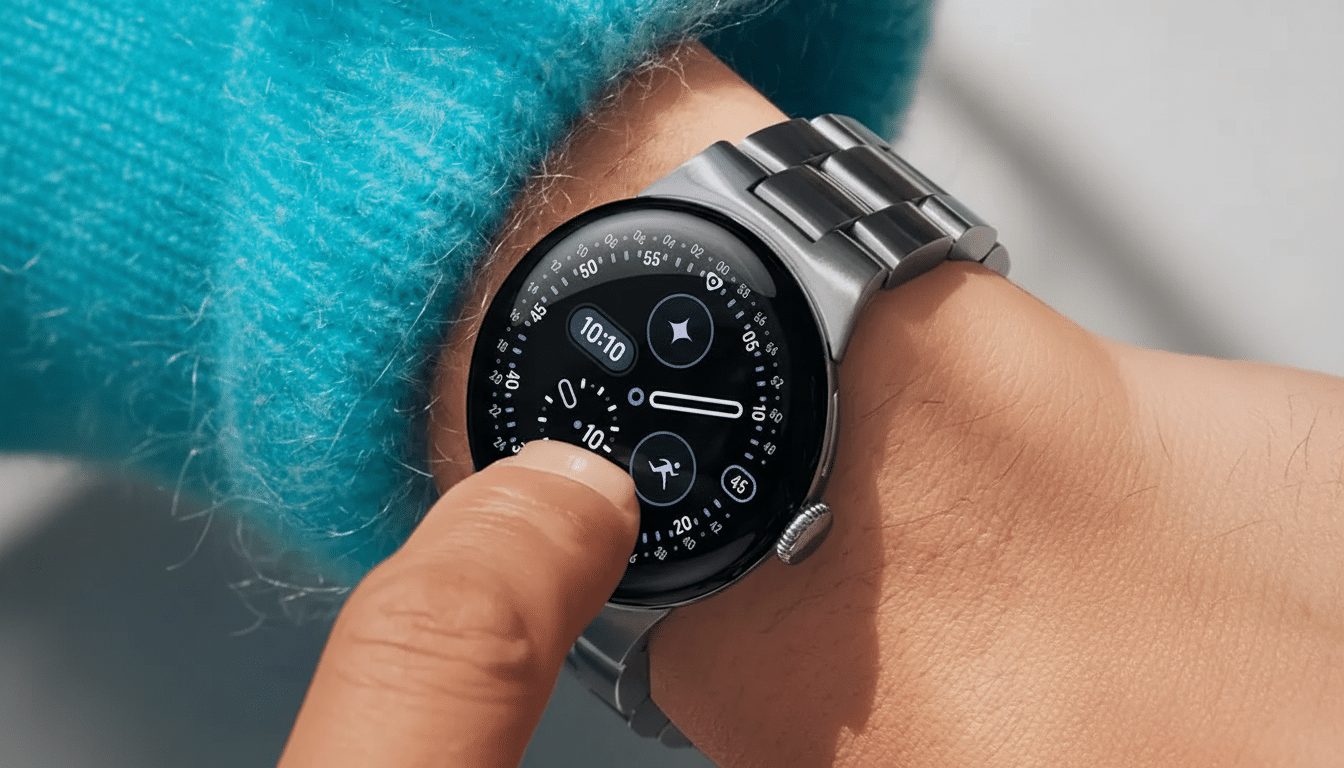Google has tested two experimental wellness features designed to identify the early warning signs of health trouble before it develops into a full-blown problem in some users of its upcoming Pixel Watch via Fitbit Labs. The trials focus on detecting peculiarities in vital readings and sending out alerts of hypertension risk, with information returned to refine algorithms ahead of a wider rollout.
What Fitbit Is Testing in Pixel Watch Health Experiments
The first experiment, known as Unusual Trend Detection, will sniff out outliers across signals including resting heart rate, breathing rate, and skin temperature variation, and perhaps even blood oxygen and heart rate variability. In the event that a user’s measurements are way off their baseline, the watch will prompt them to log symptoms and context — say, poor sleep quality, stress, travel, or a new workout — then provide advice and monitor when trends return to normal.
- What Fitbit Is Testing in Pixel Watch Health Experiments
- Who Can Join and How the Fitbit Labs Trials Work
- Why Early Health Alerts on Wearables Matter Now
- The Competitive Battlefield in Wearable Health Tech
- Accuracy, Privacy, and Safety Considerations for Users
- What to Watch Next as Fitbit Expands Pilot Programs

The second experiment deals with hypertension risk. Instead of deploying on-the-spot blood pressure readings, the Pixel Watch will search for patterns linked to an increased risk of hypertension and provide proactive alerts. Some participants may be asked to wear an ambulatory blood pressure monitoring cuff for 24 hours to corroborate the watch’s alerts with gold standard readings, according to a report from 9to5Google.
Who Can Join and How the Fitbit Labs Trials Work
Fitbit will enroll up to 10,000 people in the US for now, with the current trial exclusive to owners of a Pixel Watch 3. They want users to wear the watch consistently — for hypertension testing, that means 180 days straight — so models can learn each person’s baseline and sense what constitutes a meaningful departure from it.
Enrollment resides in the Fitbit app on the You tab through the Fitbit Labs card. Users can choose to participate in Unusual Trend Detection, and also request to be notified if contacted. Testers are warned that they might experience a slight, short-term dip in battery life during the study but nothing to keep them from getting through a full day. Google is giving $25 in compensation to those who complete the program.
For data to be used, everything flows back to Google in order to improve detection models geared toward achieving a broader rollout if accuracy and usefulness hit internal thresholds. The company cautions that these features are experimental and not intended as diagnostic information.
Why Early Health Alerts on Wearables Matter Now
Little physiological changes are often symptomatic. Amid the pandemic, researchers at Stanford University found that wearable devices detected illness signals before symptoms emerged in roughly 63 percent of COVID-19 cases observed, and the Scripps Research DETECT project demonstrated widespread potential for resting heart rate, sleep, and activity data to distinguish infections near onset of symptoms. Being able to notice anomalies in real time might allow users to sleep easier, loosen up training loads, or connect with a doctor faster.

On the blood pressure front, there are hardly any consumer wearables in this roundup that give you cuff-free, clinical-grade readings. (As you might note, Samsung provides the blood pressure tracking feature in some regions but insists it be calibrated periodically with a traditional cuff, illustrating just how hard it is to estimate pressure from optical signals alone.) Fitbit’s risk-based approach — marking trends rather than pretending to find reliable numbers — points a wary way forward that may more accurately scale.
The Competitive Battlefield in Wearable Health Tech
The Pixel Watch has lagged behind competitors in headline health features, particularly given Samsung’s new flagship and long-lived heart health capabilities on the Apple Watch like irregular rhythm notifications and AFib history. If Fitbit’s experiments bear fruit, Google could close that gap with insights that don’t just prompt action, but also feel immediately actionable — “something seems off, here’s what to do next,” rather than passive trend charts.
The approach also plays to Fitbit’s strengths. Its platform currently collects sleep stages, readiness metrics, and recovery cues. By introducing anomaly detection and alerts for hypertension risk, those signals are woven into timely interventions — where users tend to see real value.
Accuracy, Privacy, and Safety Considerations for Users
These features are not a replacement for clinical assessment. False positives may cause anxiety, whereas false negatives could lead to a delay in receiving care. Forcing 180 days of wear before testing for hypertension risk looks like a focus on establishing individual baselines and cutting noise, while the ambulatory cuff is optional to see if any alerts actually reflect real-world spikes.
On privacy — Health data gathered by consumer wearables are generally not covered by medical privacy laws unless processed by covered entities. Google says the data helps improve its algorithms, and users should review consent forms, opt-out controls, and what happens with de-identified information. The benefit is most compelling when transparency and end-user control are at the forefront.
What to Watch Next as Fitbit Expands Pilot Programs
If the pilots hit performance thresholds, look for a gradual expansion to additional users and devices. In the meantime, those who are enrolled can get a better signal by wearing it tightly, keeping sensors clean, wearing it at night, and logging symptoms regularly when prompted. Early warning systems are only as strong as the data behind them — and for Fitbit, this study is one step toward getting that data.

